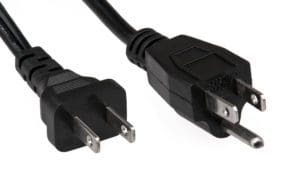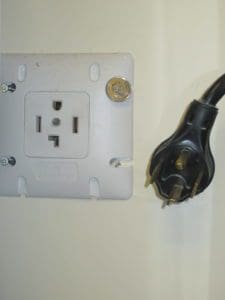Autoclave Explainer: Single-phase vs. Three-phase Power
By: Priorclave North America
Category: Lab Autoclaves

While searching for lab equipment, you likely noticed that some devices specify “single phase” power, while others note that they run on “three phase” power. And in all likelihood you had, at best, only the vaguest idea what this meant. A quick online search probably turned up an an answer like:
“The phase of a load refers to how the load is distributed. Single-phase power is a two-wire alternating current (AC) power circuit where all the voltage supplies vary in unison, while three-phase power is a polyphase system relying on a three-wire AC power circuit. Single-phase power supplies are most commonly used when typical loads are lighting or heating, rather than large electric motors, while a three-phase power supply better accommodates higher loads.”
Which is probably not a terribly helpful answer, especially when most of the plugs you see with three prongs on them are single-phase!
Fortunately, you don’t need to learn much to make the right choice when sourcing equipment for the lab.
Single Vs. Three-Phase Power 101
Here’s what you need to know:
1) “Single-Phase” Power is “Normal.” Most of the AC (i.e. “wall current” or “wall socket”) electricity you deal with is “single-phase.” If it has a plug like the two shown below, it’s running on single-phase power.

2) “Three-Phase” Power is “Industrial.” While there are only a couple styles of single-phase plugs and sockets in North America, there are a menagerie of chunky three-phase plugs and receptacles. If the plug is funky (like the ones shown below), it’s three-phase power.

3) Many Buildings Support Both. A given building may be wired to deliver both single-phase and three-phase power. Residential homes are usually wired only for single-phase power. But commercial and industrial buildings—as well as large apartment buildings or condominium developments—may have both single- and three-phase sockets. For example, an office building will always have single-phase power outlets in all of the offices. But they likely rely on a three-phase supply for the rooftop HVAC system (which needs to run big electrical motors to move air through the ducts).
Likewise, if you’ve lived in an older apartment building, you likely had “normal” outlets in your apartment, but may have noticed that the dryers in the basement had big, weird, chunky plugs. Those were three-phase circuits.
4) Single-phase is Simple; Three-Phase is Efficient. Single-phase power is simpler to wire. That’s why it’s popular in residential construction, where people’s power needs and consumption are less critical. Three-phase power, meanwhile, is less expensive and more efficient to operate at scale. Since it provides “smooth” consistent power, it’s easier on some mechanicals, like the motors in an HVAC system. This can also be very important with some sensitive equipment.
From Your Garage Start Up to Cupertino: We’ll Be With You Every Step of the Way
While some sensitive equipment may absolutely demand three-phase power, your autoclave shouldn’t be one of them. In general, a three-phase electrically heated autoclave will warm up faster, which is why Priorclave’s standard autoclave configuration is three-phase. Since most commercial and industrial buildings have three-phase supplies in place, that’s not an issue.
That said, we recognize that today’s startup labs and smaller operations might start anywhere—and outgrow that space quickly. As such, they may prefer a single-phase device that can operate in more places with less hassle during setup. As such, Priorclave can offer any of our models in a single phase configuration, if that’s preferable. Let’s discuss your needs, and we’ll help you get the autoclave that’s right for you.
photo credits
- [credit: “A set of North American AC power plugs, a regular and an grounded plug” by Evan-Amos released into the public domain.]
- [credit: “NEMA 14-30 clothes dryer receptacle and plug” by Wtshymanski released under CC BY-SA 3.0.]

